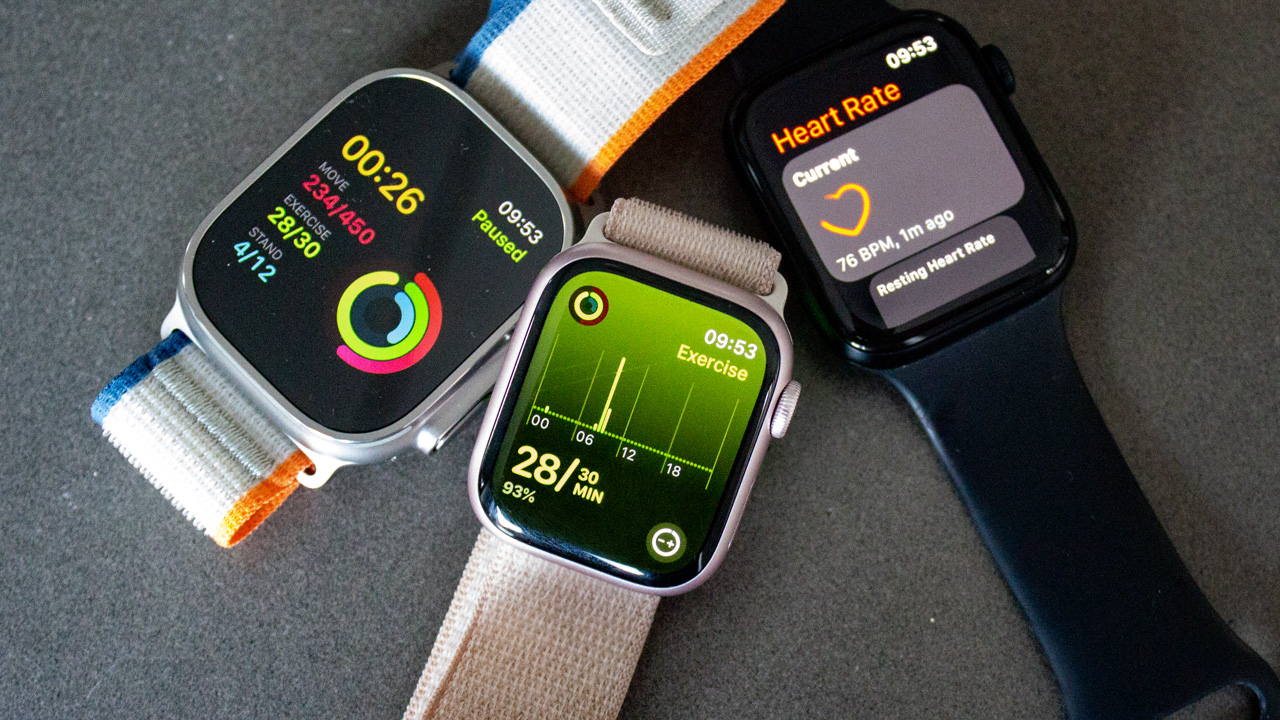Future Apple Watches could measure your core body temperature and make your thermometer useless
Future Apple Watches could have a thermometer built in.

The Apple Watch is full of sensors whether you pick up a new Apple Watch Ultra 2 or are still rocking an older Apple Watch Series 7, but Apple is always likely to try and add more. There have long been rumors of the addition of things like a blood pressure sensor and more, and Apple's recent legal issues notwithstanding, the Apple Watch's blood oxygen sensor can be super useful alongside the heart rate sensor and ECG.
While the Apple Watch can already measure the wearer's temperature, that particular sensor is only currently used in a way that allows the Apple Watch to help women track their menstrual cycle. That's a great feature but a temperature sensor could go well beyond that, like help predict when the wearer is getting ill, for example. Now, it seems that the company has its sights on a new body temperature sensor that will go beyond what is currently offered in any Apple Watch.
The sensor would be capable of figuring out a wearer's core temperature which would normally require a medical thermometer to be put into a person's mouth or ear. We've all been there and got the T-shirt, but imagine if your Apple Watch could measure the same core temperature on its own, without anything poking into a mouth or ear. That's what a new Apple patent appears to be working towards.
A hot (or cold) new feature
The patent, first spotted by Patently Apple, was published by the U.S. Patent and Trademark Office last week and Apple says that it is all about measuring the core temperature rather than the temperature of the skin — something wearables can already do. Both smartwatches and smart rings have been doing that for years, but core temperatures? That'd be new.
Apple's patent notes that "core temperatures can be measured with medical thermometers with access to a person's mouth or ear cavity, but these methods are invasive and not compatible with typical wearable electronic devices such as electronic watches." The answer, Apple believes, is software.
The issue with measuring the temperature of an Apple Watch wearer right now is that it's difficult to know how much of the reading is the person's body and how much of it is being impacted by the environment. Apple thinks that it can try and narrow that down by taking two measurements — one of the wearer's skin, and one further away. That sensor would likely be placed near the Apple Watch's display which is essentially as far away from skin as an Apple Watch can get.
Once Apple has the two temperatures it will use an algorithm to try and extrapolate the wearer's core temperature. That's the theory, at least, and the patent has a more in-depth explanation.
Master your iPhone in minutes
iMore offers spot-on advice and guidance from our team of experts, with decades of Apple device experience to lean on. Learn more with iMore!
This isn't the first time that we've seen talk of an Apple Watch measuring core temperatures, however. It was thought that the Apple Watch Series 8 could have a similar feature. Analyst Ming-Chi Kuo believed that the Apple Watch Series 7 was originally planned to have the feature before it was canceled, but the Apple Watch Series 8 launch came and went with no sign of it. The feature didn't debut with the Apple Watch Series 9, either.
Apple is thought to be readying a new Apple Watch for a launch this fall so it's possible the feature could debut then. Tentatively dubbed the Apple Watch X, the wearable will mark ten years since the original Apple Watch debuted.
More from iMore

Oliver Haslam has written about Apple and the wider technology business for more than a decade with bylines on How-To Geek, PC Mag, iDownloadBlog, and many more. He has also been published in print for Macworld, including cover stories. At iMore, Oliver is involved in daily news coverage and, not being short of opinions, has been known to 'explain' those thoughts in more detail, too. Having grown up using PCs and spending far too much money on graphics card and flashy RAM, Oliver switched to the Mac with a G5 iMac and hasn't looked back. Since then he's seen the growth of the smartphone world, backed by iPhone, and new product categories come and go. Current expertise includes iOS, macOS, streaming services, and pretty much anything that has a battery or plugs into a wall. Oliver also covers mobile gaming for iMore, with Apple Arcade a particular focus. He's been gaming since the Atari 2600 days and still struggles to comprehend the fact he can play console quality titles on his pocket computer.
